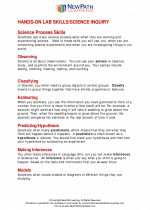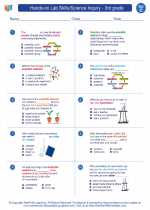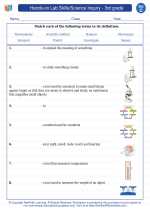Temperature Regulation
Temperature regulation is the process by which an organism maintains a stable internal temperature, despite changes in the external environment. This is crucial for the proper functioning of biological processes, as most organisms have a narrow temperature range within which they can survive and thrive.
How is Temperature Regulated?
Temperature regulation in humans is primarily controlled by the hypothalamus, a region of the brain that acts as the body's thermostat. When the body's temperature deviates from the set point, the hypothalamus initiates a variety of responses to bring the temperature back to normal. These responses include:
- Vasodilation and Vasoconstriction: Blood vessels near the skin surface dilate to release heat, or constrict to conserve heat.
- Sweating: The body releases moisture through the skin, which evaporates and cools the body.
- Shivering: Rapid muscle contractions generate heat to warm the body.
- Metabolic Adjustments: The body's metabolic rate can increase to produce more heat, or decrease to conserve heat.
Factors Affecting Temperature Regulation
Several factors can affect an organism's ability to regulate its temperature, including:
- External Temperature: Extreme heat or cold can challenge the body's ability to maintain a stable internal temperature.
- Physical Activity: Exercise and physical exertion can increase body temperature.
- Illness or Infection: Fever is a natural response to infection, as the body raises its temperature to help fight off pathogens.
- Hormonal Changes: Hormones such as adrenaline can affect temperature regulation by increasing metabolic activity.
- Age and Health: Infants, elderly individuals, and those with certain medical conditions may have reduced ability to regulate their temperature.
Study Guide
To study temperature regulation, it's important to understand the following key concepts:
- Define temperature regulation and explain its importance in maintaining homeostasis.
- Identify the role of the hypothalamus in controlling body temperature.
- Describe the physiological responses involved in temperature regulation, such as vasodilation, sweating, and shivering.
- Explain how external factors, physical activity, and illness can influence temperature regulation.
- Discuss the impact of age, health, and hormonal changes on an organism's ability to regulate its temperature.
Additionally, it's beneficial to review case studies or scenarios involving temperature regulation in different environmental conditions or health-related situations to apply the knowledge in practical contexts.
[Temperature Regulation] Related Worksheets and Study Guides:
.◂Science Worksheets and Study Guides Third Grade. Hands-on Lab Skills/Science Inquiry - 3rd grade

 Worksheet/Answer key
Worksheet/Answer key
 Worksheet/Answer key
Worksheet/Answer key
 Worksheet/Answer key
Worksheet/Answer key
 Worksheet/Answer key
Worksheet/Answer key
 Vocabulary/Answer key
Vocabulary/Answer key
 Vocabulary/Answer key
Vocabulary/Answer key
